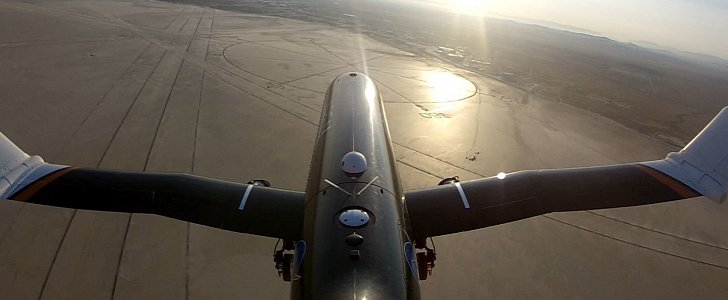Aircraft wings tremble mid-air, as all of us who sat on an airplane witnessed first hand. Although a normal event, it is however scary. How would you feel then if you saw the wing on the craft you are flying with bend, twist or turn in the middle of the flight?
The National Aeronautics and Space Administration (NASA) is currently trying to develop just such a wing. One that can fold its outer portions and their control surfaces to optimal angles in flight, to “obtain a wide spectrum of aerodynamic benefits.”
NASA's project is called Spanwise Adaptive Wing (SAW) and is being tested at NASA’s Armstrong Flight Research Center in California on a small-scale UAV called Prototype Technology-Evaluation Research Aircraft (PTERA). Its principle is pretty simple to explain: a shape memory alloy is triggered by temperature and works by using thermal memory in a tube to move and function as an actuator and bend the wing tips.
During the tests, NASA's UAV managed to fold its wings, in different flights, to different angles between zero and 70 degrees within three minutes. In the course of this year, the possibility of folding the wings 70 degrees both up and down in a single flight will be tested.
But why? NASA says that on subsonic aircraft, the ability of the plane to fold its wings can increase controllability and in the log run reduce the dependability, and even eliminate, the heavy tail rudder assembly. This is turn will reduce fuel consumption. Parking or taxiing long-winged aircraft in smaller airports will also become possible.
For supersonic planes, the biggest benefit will be reduced drag. The increased performance of the aircraft during the transition from subsonic to supersonic speeds is also a plus of the SAW wing system.
"Through this effort, we may be able to enable this element to the next generation of supersonic flight, to not only reduce drag but also increase performance," said SAW Principal Investigator Matt Moholt.
NASA's project is called Spanwise Adaptive Wing (SAW) and is being tested at NASA’s Armstrong Flight Research Center in California on a small-scale UAV called Prototype Technology-Evaluation Research Aircraft (PTERA). Its principle is pretty simple to explain: a shape memory alloy is triggered by temperature and works by using thermal memory in a tube to move and function as an actuator and bend the wing tips.
During the tests, NASA's UAV managed to fold its wings, in different flights, to different angles between zero and 70 degrees within three minutes. In the course of this year, the possibility of folding the wings 70 degrees both up and down in a single flight will be tested.
But why? NASA says that on subsonic aircraft, the ability of the plane to fold its wings can increase controllability and in the log run reduce the dependability, and even eliminate, the heavy tail rudder assembly. This is turn will reduce fuel consumption. Parking or taxiing long-winged aircraft in smaller airports will also become possible.
For supersonic planes, the biggest benefit will be reduced drag. The increased performance of the aircraft during the transition from subsonic to supersonic speeds is also a plus of the SAW wing system.
"Through this effort, we may be able to enable this element to the next generation of supersonic flight, to not only reduce drag but also increase performance," said SAW Principal Investigator Matt Moholt.




